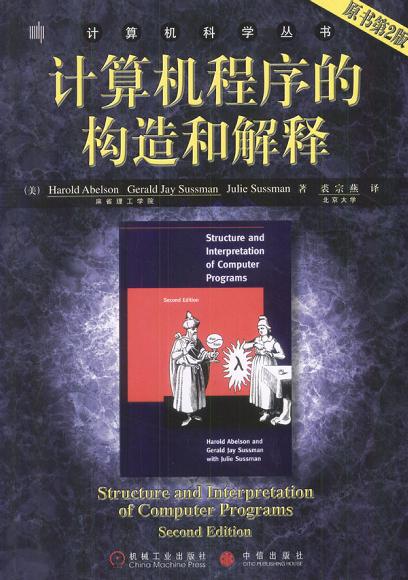-

Writing GNU Emacs Extensions
-

How to Design Programs
This introduction to programming places computer science in the core of a liberal arts education. Unlike other introductory books, it focuses on the program design process. This approach fosters a variety of skills--critical reading, analytical thinking, creative synthesis, and attention to detail--that are important for everyone, not just future computer programmers. The book exposes readers to two fundamentally new ideas. First, it presents program design guidelines that show the reader how to analyze a problem statement; how to formulate concise goals; how to make up examples; how to develop an outline of the solution, based on the analysis; how to finish the program; and how to test. Each step produces a well-defined intermediate product. Second, the book comes with a novel programming environment, the first one explicitly designed for beginners. The environment grows with the readers as they master the material in the book until it supports a full-fledged language for the whole spectrum of programming tasks. All the book's support materials are available for free on the Web. The Web site includes the environment, teacher guides, exercises for all levels, solutions, and additional projects. -- amazon.com -

The Little Schemer - 4th Edition
This delightful book leads you through the basic elements of programming in Scheme (a Lisp dialect) via a series of dialogues with well-chosen questions and exercises. Besides teaching Scheme, The Little Schemer teaches the reader how to think about computation. The authors focus on ten essential concepts of thinking about how to compute and demonstrate how to apply these concepts in inventive ways. The Little Schemer is an excellent book both for the beginner and for the seasoned programmer. -

Structure and Interpretation of Computer Programs - 2nd Edition (MIT)
Structure and Interpretation of Computer Programs has had a dramatic impact on computer science curricula over the past decade. This long-awaited revision contains changes throughout the text. There are new implementations of most of the major programming systems in the book, including the interpreters and compilers, and the authors have incorporated many small changes that reflect their experience teaching the course at MIT since the first edition was published. A new theme has been introduced that emphasizes the central role played by different approaches to dealing with time in computational models: objects with state, concurrent programming, functional programming and lazy evaluation, and nondeterministic programming. There are new example sections on higher-order procedures in graphics and on applications of stream processing in numerical programming, and many new exercises. In addition, all the programs have been reworked to run in any Scheme implementation that adheres to the IEEE standard. -

计算机程序的构造和解释
《计算机程序的构造和解释(原书第2版)》1984年出版,成型于美国麻省理工学院(MIT)多年使用的一本教材,1996年修订为第2版。在过去的二十多年里,《计算机程序的构造和解释(原书第2版)》对于计算机科学的教育计划产生了深刻的影响。第2版中大部分重要程序设计系统都重新修改并做过测试,包括各种解释器和编译器。作者根据其后十余年的教学实践,还对其他许多细节做了相应的修改。 海报: